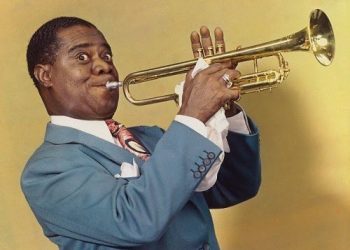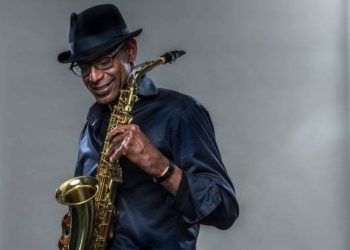Jazz is more than just music; it’s an exhilarating journey through sound, emotion, and cultural history. Originating in the vibrant streets of New Orleans, this genre has evolved into a rich tapestry woven with improvisation, rhythm, and soul. The best jazz artists not only shaped the genre but also pushed the boundaries of musical expression, leaving an indelible mark on the world. From the sultry saxophone of John Coltrane to the genius of Miles Davis, these musicians have taken listeners on unforgettable adventures, blending influences from blues, gospel, and classical music.
In this article, we dive into the top 15 best jazz artists of all time, each one a master in their own right, whose creativity and innovation have redefined the landscape of jazz. Whether you’re a seasoned aficionado or a curious newcomer, this list promises to inspire and enlighten. We’ll explore their groundbreaking contributions, signature styles, and the legacies they’ve left behind. So grab your favorite drink, settle into your listening space, and prepare to discover the brilliance of these jazz legends who continue to resonate through the ages. Join us as we celebrate the magic of jazz and its most influential artists!
1. Louis Armstrong
Louis Armstrong, affectionately known as “Satchmo,” is often considered the heartbeat of jazz, and his influence on the genre is nothing short of monumental. A brilliant trumpeter with a distinctive gravelly voice, Armstrong reshaped the landscape of jazz music. Before his rise, jazz was primarily ensemble-based, with collective improvisation taking the front seat. Armstrong’s approach, however, introduced the concept of the soloist as the star of the show, making jazz a platform for individual expression. His virtuosic trumpet playing, full of emotion and technical brilliance, became the gold standard for aspiring jazz musicians.
Armstrong’s unforgettable hits, like “What a Wonderful World” and “Hello, Dolly!”, revealed his ability to connect deeply with his audience. His warm, engaging stage presence and improvisational genius set him apart from his contemporaries. He had a unique ability to transform any piece into something extraordinary, blending raw emotion with sophisticated technicality. Armstrong’s trumpet solos were nothing short of magical—effortlessly soaring to new heights, while his vocal performances, with their warmth and unique timbre, held a special place in the hearts of listeners.
Beyond his musical gifts, Armstrong’s larger-than-life personality and charisma on stage made him an international star, helping jazz gain worldwide recognition. He was one of the first African American musicians to achieve fame in a segregated society, breaking racial barriers in ways that went beyond music. With his music and his smile, Armstrong became a symbol of the joy and resilience of the human spirit. His influence has been felt across multiple generations, and his legacy as a musical innovator and cultural icon continues to inspire artists and jazz lovers around the world.
2. Duke Ellington
Duke Ellington was not just a bandleader or composer; he was a visionary who fundamentally redefined what jazz could be. Throughout his decades-long career, Ellington crafted compositions that blended the sophistication of orchestral music with the pulse and energy of jazz. His ability to arrange for both small ensembles and large orchestras allowed him to create timeless pieces that pushed the boundaries of jazz and its potential for musical expression. He composed thousands of pieces, including unforgettable classics like “Mood Indigo” and “Take the ‘A’ Train,” which not only highlighted his compositional brilliance but also his exceptional ability to showcase the individual talents of his band members.
Ellington’s performances, particularly those at New York’s legendary Cotton Club, were groundbreaking for their time. As a bandleader, he knew how to bring out the best in his musicians, using their strengths to create a rich, cohesive sound that was uniquely his own. His collaborations with other jazz greats, such as Johnny Hodges, Cootie Williams, and Charles Mingus, produced some of the most iconic moments in jazz history. Ellington didn’t just play music—he painted with sound, using his compositions to evoke mood, tell stories, and explore complex emotions.
Ellington was a master of combining jazz rhythms with classical and contemporary influences. His ability to incorporate these diverse elements into a cohesive, fluid whole elevated jazz to a high art form. His musical contributions had a lasting influence, shaping the evolution of jazz and inspiring countless musicians in the decades that followed. As a performer, bandleader, and composer, Duke Ellington left a profound legacy in the world of music, and his work continues to be celebrated as some of the finest ever written.
3. Charlie Parker
Charlie Parker, affectionately known as “Bird,” was one of the most transformative figures in the history of jazz. A true innovator, Parker revolutionized the genre with his lightning-fast bebop style, pushing the boundaries of harmony, rhythm, and melody in ways that had never been heard before. His virtuoso saxophone playing was awe-inspiring, and his mastery of the instrument allowed him to break free from traditional jazz forms, creating new structures that became the foundation for modern jazz.
Tracks like “Ornithology” and “Ko-Ko” remain some of the most iconic in the jazz canon, showcasing Parker’s ability to create complex, fast-paced melodies that were full of emotion and surprise. His improvisational skills were unparalleled, and his ability to navigate through intricate harmonic changes with such speed and fluidity set a new standard for jazz musicians. With Parker, jazz became a language of its own, one in which improvisation was the key element, allowing musicians to express their own voice and ideas in real-time.
Parker’s innovation wasn’t limited to his playing; his unique approach to melody and harmony influenced the entire bebop movement, which challenged the established norms of jazz. Bebop was characterized by its fast tempos, complex chords, and intricate rhythms, and Parker’s contributions were at the heart of this transformation. His work with other jazz giants like Dizzy Gillespie, Thelonious Monk, and Max Roach helped cement bebop as the dominant style in the 1940s and beyond.
Sadly, Parker’s career was cut short by his struggles with addiction and personal demons, but his legacy lives on. His innovative approach to jazz still resonates with musicians today, and his recordings remain essential listening for anyone wanting to understand the evolution of jazz.
4. John Coltrane
John Coltrane is often regarded as one of the most important and innovative saxophonists in the history of jazz. His work transformed not just the genre of jazz but music as a whole, as he continuously sought to explore new dimensions of sound, spirituality, and emotion through his saxophone. Coltrane’s music became an exploration of the human experience, deeply introspective and often transcendent in nature. One of his most influential works, the album A Love Supreme, is considered not only a masterpiece of jazz but also a spiritual journey—a reflection of Coltrane’s quest for a deeper connection with the divine.
Coltrane’s technical prowess on the saxophone was unmatched, but it was his relentless pursuit of innovation that truly set him apart. His work with the Miles Davis Quintet helped push the boundaries of jazz in the late 1950s, and his own compositions, such as “Giant Steps,” introduced groundbreaking harmonic concepts that continue to challenge musicians today. His ability to navigate complex chord changes with ease, while also creating a unique, soulful sound, made him a pioneer in modern jazz.
Beyond the technical aspects of his playing, Coltrane’s music was also deeply emotional and spiritual. In works like A Love Supreme, he sought to express his personal journey of faith and redemption, conveying a sense of profound reverence through every note he played. His music became a vehicle for personal growth and spiritual exploration, offering listeners a window into Coltrane’s soul.
Coltrane’s influence extends far beyond jazz, impacting musicians in every genre. His relentless creativity and dedication to pushing the boundaries of music have made him a lasting figure in the world of jazz, and his work continues to inspire musicians to take risks and explore new creative territories.
5. Miles Davis
Miles Davis was a musical chameleon, constantly evolving his sound and redefining jazz at every turn. His career spanned five decades, during which he pioneered several key movements in jazz, from cool jazz to modal jazz to jazz fusion. Davis’s ability to reinvent himself kept him at the cutting edge of the genre, influencing generations of musicians and shaping the course of jazz history. His creativity and vision are evident in landmark albums like Birth of the Cool, Kind of Blue, and Bitches Brew—each of which marked a dramatic shift in jazz and had a profound impact on the music world at large.
Davis’s album Kind of Blue is often hailed as one of the greatest jazz records of all time. Featuring a groundbreaking ensemble of musicians including John Coltrane and Cannonball Adderley, the album introduced modal jazz, a style based on scales rather than chord changes, that allowed for more improvisational freedom. The album’s relaxed yet deeply emotional sound captured a new direction for jazz, setting the standard for how improvisation could work in the context of a more contemplative, less rigid structure.
Then, in the late 1960s, Davis pushed jazz into uncharted territory with Bitches Brew, a fusion of jazz and rock that pioneered the genre of jazz fusion. This album embraced electric instruments and experimental sounds, and its influence can be heard in countless genres, from rock to electronic music. Davis’s willingness to experiment with new sounds, alongside his talent for assembling talented and diverse musicians, ensured that his music would always be unpredictable, dynamic, and ahead of its time.
Miles Davis’s legacy is one of constant reinvention and a fearlessness to take risks. His influence can be heard in nearly every genre of music, and his ability to shape and redefine jazz remains unmatched. Davis’s music not only changed the direction of jazz, but it also inspired musicians to think beyond the conventions of their time and embrace the unknown.
6. Billie Holiday
Billie Holiday, known affectionately as “Lady Day,” is one of the most influential and beloved vocalists in the history of jazz. Her voice, full of raw emotion and unparalleled expressiveness, has left an indelible mark on the genre, and her ability to convey deep feeling through her singing is what made her a true icon. With her hauntingly beautiful renditions of songs like “Strange Fruit” and “God Bless the Child,” Holiday was able to evoke the most complex emotions in her listeners, making her performances unforgettable experiences.
Holiday’s singing style was unorthodox for the time, and it was precisely this that set her apart. Rather than relying on vocal acrobatics or technical precision, Holiday sang with an intuitive, deeply personal touch that conveyed the heart of the song. She had an incredible ability to bend phrasing and timing, adding her own inflections to make each performance unique. Holiday’s voice was imperfect in the best possible way—gritty and vulnerable, yet always captivating.
In addition to her stunning vocal talent, Billie Holiday’s personal life and struggles played a crucial role in shaping her artistry. Her battles with addiction and her tumultuous relationships were reflected in her music, adding layers of authenticity and pain to her performances. Despite facing discrimination and hardship, she rose to become one of the most celebrated and influential jazz singers of all time. Her ability to turn her personal struggles into poignant art makes her a true testament to the power of music.
Her legacy continues to inspire jazz vocalists and musicians worldwide. Her recordings remain some of the most important in the jazz canon, and her emotional depth and fearless honesty set the standard for future generations of singers. Billie Holiday is not just a jazz legend—she is a symbol of the power of music to heal, connect, and transcend time.
7. Ella Fitzgerald
Ella Fitzgerald, known as the “First Lady of Song,” remains one of the most celebrated and influential jazz vocalists of all time. Her voice, characterized by its purity, range, and impeccable phrasing, captured the hearts of audiences around the world. Fitzgerald’s career spanned over six decades, during which she became known not just for her vocal prowess but for her ability to convey emotion through song in a way that few could replicate.
Her interpretations of the Great American Songbook are legendary, and her renditions of classics like “Summertime” and “Dream a Little Dream of Me” continue to be regarded as some of the finest examples of vocal jazz. Fitzgerald’s voice had an extraordinary range, capable of effortlessly navigating complex melodies, from the highest notes to the deepest lows. But it was her phrasing—her ability to shape a line, twist a lyric, or breathe new life into a melody—that made her a true vocal artist.
Ella’s remarkable technique was complemented by her joyful spirit and infectious personality. Whether performing with jazz legends like Louis Armstrong, Duke Ellington, or Count Basie, or singing solo, Fitzgerald brought a sense of warmth and joy to her music. She never lost the sense of wonder and discovery in her voice, making each performance feel like an intimate conversation with her audience.
Her influence on jazz vocalists is immeasurable. Fitzgerald’s vocal mastery set a standard for future generations of singers to strive for. From her impeccable phrasing to her ability to make each song her own, she continues to inspire musicians to approach singing with artistry, respect for the material, and the desire to connect with the listener. Ella Fitzgerald’s contribution to jazz is profound, and her legacy will endure as long as music itself.
8. Thelonious Monk
Thelonious Monk was an enigmatic genius whose contributions to jazz transformed the language of the genre. Known for his unorthodox approach to the piano, Monk’s music was as unpredictable as it was beautiful. He was a key figure in the bebop movement, yet his style set him apart from many of his contemporaries. Monk’s compositions, with their unusual chord changes and complex rhythms, challenged both musicians and listeners to rethink their understanding of jazz. His pieces like “Round Midnight” and “Blue Monk” have become iconic standards that continue to define the landscape of jazz.
What made Monk unique was not just his compositions but his playing style. He would often emphasize dissonance, deliberately creating moments of tension that were followed by unexpected resolutions. His performances were marked by deliberate pauses, sudden changes in rhythm, and an almost percussive use of the piano. Monk’s style was characterized by its idiosyncratic touches, such as playing with only a few fingers on the keys or pausing to let the music breathe, creating a sense of space and freedom in the performance.
But it wasn’t only his playing that set Monk apart—it was also his approach to improvisation. He wasn’t afraid to break the “rules” of jazz, often stepping outside of conventional harmonic structures to create something completely new. His creativity and willingness to take risks opened up new possibilities for jazz musicians. His work with fellow bebop pioneers like Charlie Parker and John Coltrane helped define the era, and his later work continued to evolve, influencing countless artists in jazz and beyond.
Monk’s distinct personality and eccentricities only added to his mystique. He was known for his quiet demeanor, often preferring to observe rather than speak. Yet when he played, his music spoke volumes. His contributions to jazz remain deeply influential, and his ability to combine complexity with simplicity continues to inspire musicians to take risks and embrace individuality.
9. Ornette Coleman
Ornette Coleman was a revolutionary force in jazz, known for his pioneering work in free jazz—a style that rejected traditional harmonic structures and embraced complete improvisation. His album The Shape of Jazz to Come (1959) was a bold statement that reshaped jazz music, and Coleman’s influence is still felt in contemporary jazz today. Unlike many of his contemporaries, Coleman wasn’t confined by the traditional forms of jazz, such as set chord progressions or specific scales, and this freedom in approach to music made him a truly groundbreaking figure.
What set Coleman apart was his innovative use of “free jazz,” where melody, harmony, and rhythm were not governed by traditional rules. He emphasized collective improvisation, where musicians would play freely, responding to each other in the moment, allowing the music to evolve organically. The result was a highly energetic and unpredictable sound that challenged the very nature of jazz, making it a more inclusive and creative art form. His contributions were not just about breaking the rules—they were about creating an entirely new set of possibilities within the genre.
Coleman’s saxophone playing was equally unique. His tone was raw, unconventional, and often described as “ugly” in its dissonance—yet it was this very quality that gave it an unmistakable emotional intensity. His avant-garde approach to the saxophone, alongside his groundbreaking compositions, made him a key figure in shaping the future of jazz. He also introduced the idea of “harmolodics,” a musical philosophy that integrated melody, harmony, and rhythm into a single, fluid concept.
Though controversial during his early years, Coleman’s ideas gradually gained widespread respect, and his impact on jazz is immeasurable. His boldness in embracing freedom and improvisation opened up new avenues for exploration in jazz and inspired a generation of musicians to expand their musical horizons.
10. Stan Getz
Stan Getz, often called “The Sound,” was a tenor saxophonist known for his smooth, lyrical playing and melodic improvisation. His tone was instantly recognizable—warm, rich, and effortlessly expressive, making him one of the most beloved saxophonists in jazz history. Getz’s approach to jazz was rooted in the tradition of swing, but he also embraced more modern styles, which allowed him to remain relevant throughout his long career. His work with bossa nova, especially on tracks like “The Girl from Ipanema,” brought a new level of international exposure to jazz, and his beautiful, gentle playing resonated with listeners from all walks of life.
Getz’s collaborations with Brazilian artists like João Gilberto and Astrud Gilberto on the album Getz/Gilberto introduced bossa nova to the world and helped merge the elegance of jazz with the rhythms of Latin American music. The album’s biggest hit, “The Girl from Ipanema,” became an instant classic and remains one of the most famous jazz tunes to this day. Getz’s ability to seamlessly blend the cool, calm nature of bossa nova with his own brand of jazz improvisation created a timeless sound that continues to captivate audiences.
What made Getz’s music stand out was his ability to convey complex emotions with simplicity. While his improvisations were sophisticated, they never felt rushed or forced. He had a way of playing that was relaxed yet deeply thoughtful, allowing each note to breathe and resonate with his audience. His sensitivity to melody and rhythm, paired with his impeccable phrasing, made him one of the most admired and influential saxophonists of his time.
Even as jazz evolved, Stan Getz’s influence endured. His ability to adapt to changing musical landscapes while remaining true to his signature sound set him apart. His legacy as a master of lyrical, melodic improvisation is celebrated by jazz musicians and fans alike. Getz’s contributions to jazz are timeless, and his distinctive style continues to inspire saxophonists and jazz lovers around the world.
11. Chick Corea
Chick Corea was a visionary in the world of jazz fusion, blending elements of jazz with rock, classical music, and Latin rhythms to create an entirely new sound. His boundless creativity and innovation helped shape the landscape of jazz fusion and influenced musicians across multiple genres. With his groundbreaking work in bands like Return to Forever and through his own solo endeavors, Corea’s contributions have had a lasting impact on both jazz and popular music.
One of Corea’s most iconic albums, Light as a Feather (1973), features his groundbreaking fusion of Latin rhythms with jazz improvisation, and tracks like “Spain” became staples of the genre. Corea’s impeccable piano technique, paired with his ability to blend genres seamlessly, made him a standout figure in fusion. His compositions were intricate yet accessible, often incorporating complex harmonic structures while maintaining an engaging, melodic flow.
What made Corea stand out was his fearless approach to exploring new musical frontiers. He was always experimenting, whether through his use of electric keyboards, synthesizers, or different scales. His exploration of different musical styles was not just technical, but deeply emotional, with each performance reflecting his passion for the music. Corea’s style was grounded in traditional jazz but infused with influences from classical and rock music, which allowed him to reach a wide array of audiences and collaborators.
His work with Return to Forever, which included notable musicians like Stanley Clarke and Al Di Meola, solidified his position as one of jazz’s greatest innovators. Corea’s playing was marked by a delicate balance between virtuosity and accessibility, always pushing the boundaries of what was possible with jazz, yet always retaining the music’s soul and emotional depth. His legacy as a pioneer of fusion and as a master of the keyboard endures, inspiring generations of musicians to embrace diversity in their musical expressions.
12. Herbie Hancock
Herbie Hancock is one of the most innovative and influential jazz musicians of the 20th century. Known for his mastery of the piano, his work spans the full spectrum of jazz, from traditional acoustic jazz to cutting-edge fusion and electronic music. Hancock’s ability to blend jazz with funk, soul, and electronic influences set him apart as a true musical chameleon, always evolving his sound to stay at the forefront of the genre.
Hancock’s seminal album Head Hunters (1973) is widely regarded as a landmark in the jazz fusion movement. Tracks like “Cantaloupe Island” and “Chameleon” combined jazz with funk grooves, laying the groundwork for the future of fusion and influencing a whole new generation of musicians. His use of electric instruments and synthesizers expanded the sonic possibilities of jazz, allowing him to explore new textures and rhythms that were unheard of in traditional jazz circles.
But Hancock’s innovation didn’t stop with fusion. His work in the ’80s and ’90s, particularly through his collaborations with the Miles Davis Quintet and his own solo work, explored the relationship between jazz and technology. Hancock was one of the first jazz musicians to embrace electronic keyboards and synthesizers fully, bringing the world of jazz into the modern age while still respecting the traditions that made the genre great.
Beyond his technical prowess, Hancock’s music has always been emotionally resonant. His ability to fuse improvisation with his distinct harmonic language creates a unique sound that is both adventurous and deeply personal. Hancock’s passion for innovation and his commitment to pushing the boundaries of jazz has earned him numerous Grammy Awards and solidified his position as one of the greatest jazz musicians of all time.
13. Sarah Vaughan
Sarah Vaughan, known as “Sassy,” was one of the most gifted vocalists in jazz history. With her rich, warm voice and remarkable range, Vaughan possessed the rare ability to effortlessly navigate complex melodies and intricate rhythms, making her a true standout in the world of jazz vocals. Her vocal technique was unparalleled, blending power, finesse, and emotional depth in every performance.
Vaughan’s ability to express deep emotion through her voice made songs like “Misty” and “Summertime” unforgettable. Her interpretations of these jazz standards elevated them to new heights, turning each into a personal statement. Whether she was performing a ballad or up-tempo tune, Vaughan had the rare gift of making every song feel as if it were her own, imbuing it with a unique emotional resonance.
What made Vaughan’s voice so extraordinary was its versatility. She could move from rich, velvety low notes to soaring high notes with ease, while maintaining complete control of her vocal timbre. Her vocal phrasing was equally impressive, as she had an innate ability to stretch and shape the rhythm of the lyrics in ways that gave each song a sense of spontaneity and freshness. Her deep understanding of jazz improvisation meant she could weave in and out of complex harmonic structures without losing her sense of melody or emotional connection to the song.
Vaughan was not only a technical virtuoso but also a master of phrasing, phrasing that made every note and every pause feel intentional. Her legacy as one of the greatest jazz singers of all time continues to inspire new generations of vocalists, and her recordings remain cherished by jazz fans worldwide.
14. Cannonball Adderley
Cannonball Adderley was an alto saxophonist whose exuberant energy and soulful playing made him a beloved figure in the jazz community. Known for his powerful sound and infectious personality, Adderley’s contributions to jazz, particularly in the hard bop and soul jazz movements, have left an indelible mark on the genre. His ability to blend technical proficiency with emotional depth made him a standout voice in jazz during his time.
One of Adderley’s most memorable works is the track “Mercy, Mercy, Mercy” from the 1966 album Mercy, Mercy, Mercy!. This track, a soulful, infectious anthem, showcases Adderley’s ability to blend melodic sweetness with intense emotional expression. It became one of the most iconic pieces of the 1960s jazz scene, demonstrating his ability to captivate both jazz enthusiasts and casual listeners alike. His collaborations with trumpeter Miles Davis on albums like Kind of Blue (1959) and Someday My Prince Will Come (1961) are often seen as defining moments in the development of modal jazz, cementing Adderley’s reputation as a versatile and innovative musician.
Adderley’s playing was marked by a sense of joy and spirit. His sound was rich and warm, filled with an expressive vibrato and a strong sense of rhythm. His improvisational approach was rooted in the blues, and he used this foundation to create solos that were both technically sophisticated and emotionally resonant. Adderley’s ability to mix both complex musicality with accessibility made him a key figure in making jazz more relatable to a broader audience.
In addition to his technical brilliance, Cannonball Adderley’s personality shone through in his music. His vibrant, optimistic approach to life and music made him a true jazz icon, whose influence continues to inspire musicians across genres.
15. Wynton Marsalis
Wynton Marsalis is a modern-day ambassador for jazz, celebrated not only for his virtuosic trumpet playing but also for his dedication to preserving the art form’s rich history. As a master of both classical and jazz music, Marsalis has bridged the gap between the two worlds, using his unique voice to carry the torch of traditional jazz while infusing it with contemporary sensibilities. His commitment to the craft and his extensive contributions to both jazz performance and education have made him one of the most influential figures in modern jazz.
Marsalis’s groundbreaking work with his band, the Lincoln Center Jazz Orchestra, has brought new life to the traditions of big band jazz while simultaneously pushing the genre into fresh territory. His compositions and arrangements are deeply rooted in the history of jazz but also demonstrate his innovative approach to rhythm, harmony, and orchestration. His ability to blend classical influences with the improvisatory spirit of jazz has earned him widespread acclaim, culminating in numerous Grammy Awards and the Pulitzer Prize for Music in 1997 for his oratorio Blood on the Fields.
One of Marsalis’s most defining features is his passion for jazz education. As a teacher, he has worked to ensure that the history and techniques of jazz are passed on to future generations. His work at institutions like the Juilliard School, along with his educational initiatives through Jazz at Lincoln Center, has made a profound impact on young musicians and has helped ensure that the spirit of jazz lives on.
Wynton Marsalis’s technical skill, musical vision, and dedication to the preservation of jazz make him a towering figure in the genre. His ability to play with such precision and expression while maintaining a deep respect for the tradition of jazz ensures that his legacy will continue to inspire generations to come.









